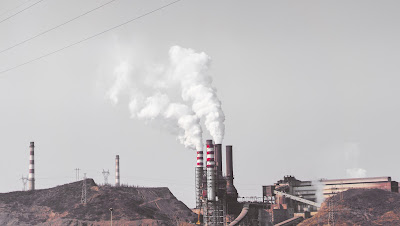(Note: The order may vary depending on sources, but these countries generally have low industrial activity, strong environmental regulations, and abundant green spaces)
The Breath of Life: Unveiling the Top 10 Countries with the Highest and Lowest Air Quality
The air we breathe sustains us, but its quality varies drastically across the globe. Some countries grapple with choking pollution, while others enjoy remarkably clean air. This blog delves into the top 10 countries with the highest and lowest Air Quality Index (AQI) readings, highlighting the global disparity in air quality and its impact.
Top 10 Countries with the Highest AQI:
-
Chad: This African nation holds the unfortunate distinction of having the world's worst air quality. Dust storms from the Sahara and widespread biomass burning contribute to an AQI often exceeding 100, posing significant health risks.
-
India: Densely populated cities like Delhi and Kolkata struggle with severe air pollution. A lethal combination of vehicular emissions, industrial activity, and agricultural burning creates smog-filled environments, pushing the AQI into the hazardous zone.
-
Pakistan: Vehicle exhaust from congested cities, brick kiln operations, and agricultural practices create a toxic cocktail in Pakistan, particularly in Lahore and Karachi. The resulting air quality can be hazardous, impacting public health.
-
Bangladesh: Rapid industrialization and a growing population have exacerbated air quality issues in Bangladesh. Brick kilns, power plants, and vehicle exhaust contribute to a polluted environment, especially in Dhaka, the capital city.
-
Bahrain: Despite its small size, Bahrain faces significant air quality challenges. Oil refineries, industrial activity, and dust storms from surrounding deserts contribute to unhealthy AQI levels, impacting public health and visibility.
-
Mongolia: During harsh winters, Mongolia's dependence on coal for heating and dust storms from the Gobi Desert create a hazardous environment, particularly in Ulaanbaatar. The AQI often soars, posing health risks for residents.
-
Afghanistan: Decades of conflict have left a mark on Afghanistan's environment. Dust storms, along with emissions from vehicles and limited waste management, contribute to poor air quality, especially in urban areas.
-
Nigeria: Africa's most populous nation grapples with air quality concerns. Vehicle exhaust from congested traffic, industrial activity, and widespread waste burning contribute to unhealthy air, especially in Lagos.
-
Ethiopia: Rapid development brings challenges for Ethiopia's air quality. Industrial emissions, dust from construction projects, and widespread use of biomass fuels for cooking contribute to elevated AQI levels.
-
Egypt: Air pollution is a growing concern in Egypt. Vehicle emissions from a growing car population, industrial activity concentrated around the Nile Delta, and sandstorms blowing in from deserts contribute to unhealthy air quality, particularly in Cairo.
**Top 10 Countries with the Lowest AQI (Note: The order may vary depending on sources, but these countries generally have low industrial activity, strong environmental regulations, and abundant green spaces):
-
Finland: With vast forests and a strong commitment to clean energy, Finland boasts some of the world's cleanest air. Strict emission regulations and a focus on renewable energy sources contribute to its exceptional air quality.
-
Iceland: Iceland's geothermal activity, remote location, and limited industrial development contribute to its remarkably clean air. The country harnesses geothermal energy for electricity and heating, further reducing reliance on fossil fuels.
-
Estonia: Estonia prioritizes environmental protection, reflected in its clean air. Sustainable forestry practices, a focus on renewable energy, and limited heavy industry contribute to its healthy AQI levels.
-
Sweden: Stringent environmental regulations and a shift towards renewable energy sources have positioned Sweden as a leader in clean air. Investments in public transportation and green infrastructure further contribute to healthy air quality.
-
New Zealand: With breathtaking landscapes and a commitment to sustainability, New Zealand boasts exceptionally clean air. Limited industrial activity, abundant green spaces, and a focus on renewable energy contribute to its healthy AQI.
-
Ireland: Ireland's commitment to environmental protection is evident in its clean air. Strict regulations on emissions, a focus on renewable energy, and vast green spaces contribute to healthy air quality across the country.
-
Denmark: Denmark prioritizes clean air and sustainable practices. Investments in wind energy, cycling infrastructure, and energy-efficient buildings contribute to its healthy AQI levels.
-
Grenada: This Caribbean island nation boasts pristine air quality. Limited industrial activity, abundant rainforests, and a focus on eco-tourism contribute to its clean air.
-
Bhutan: The "Land of the Thunder Dragon" prioritizes environmental conservation. Limited industrial development, vast forests, and a focus on hydropower contribute to its exceptionally clean air.
-
Costa Rica: A champion of environmental conservation, Costa Rica boasts clean air.





No comments:
Post a Comment